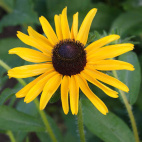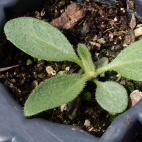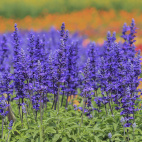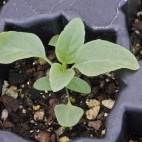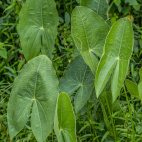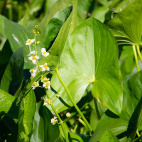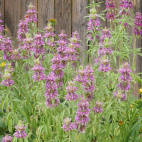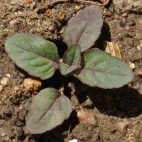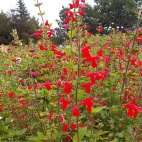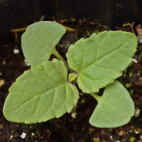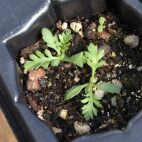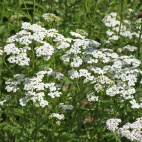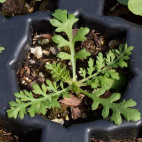Color
Availability
USDA Zone
Region
Type
Duration
Season
Germination
Soil
Sunlight
Height
Use
Narrow Your Search
Color
Availability
USDA Zone
Region
Type
Duration
Season
Germination
Soil
Sunlight
Height
Use
Wildflower Seeds - Northern Region
The Northern region is home to our Canadian friends in the eastern provinces, as well as the northern-most part of the Eastern US. This area is characterized by a long, cold winter with lots of snow, and a short humid summer that only lasts about 3 or 4 months. Most of the area is classified as a UDSA Growing Zone 4 or less, and the species that grow here have interesting ways to perpetuate themselves in spite of the short growing season. There are a lot of forests and wetlands in this region, so adequate moisture is hardly ever a problem. Look up your growing zone to make sure that the Northern wildflower seeds that you want to grow are winter hardy. Alternatively, just order annual flower seeds online so that the plant does not need to make it through the winter, but can reseed itself and come back from seed the next year.
-
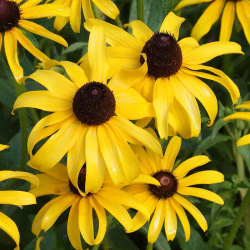 Black Eyed Susan Seeds
Rudbeckia hirta
Black-eyed Susan is probably the most popular wildflower for summer gardens. This biennial is so easy to grow, and produces a lot of showy yellow blooms that are liked by butterflies - so why not have it in the garden?Quick View$2.98 Pkt - $7.09 / Oz
Black Eyed Susan Seeds
Rudbeckia hirta
Black-eyed Susan is probably the most popular wildflower for summer gardens. This biennial is so easy to grow, and produces a lot of showy yellow blooms that are liked by butterflies - so why not have it in the garden?Quick View$2.98 Pkt - $7.09 / Oz -
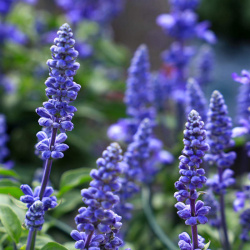 On Sale!
Blue Sage Seeds
Salvia farinacea
Dressed in vivid blue, these wildflower spikes are easy to grow. This perennial comes from Texas, so it can tolerate a lot of heat and drought. This plant has a wild habit and may look a little unruly in a refined garden.Quick View$3.48 Pkt - $15.72 / Oz
On Sale!
Blue Sage Seeds
Salvia farinacea
Dressed in vivid blue, these wildflower spikes are easy to grow. This perennial comes from Texas, so it can tolerate a lot of heat and drought. This plant has a wild habit and may look a little unruly in a refined garden.Quick View$3.48 Pkt - $15.72 / Oz -
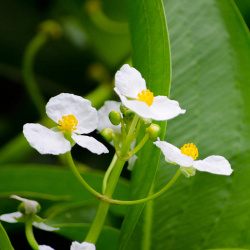 Common Arrowhead Seeds
Sagittaria latifolia
Native to ponds, streams, and marshes, this perennial is known by its arrowhead-shaped leaves and white three-petaled flowers. This plant is also known as Duck Potato because it grows tubers that the ducks like to eat.Quick View$3.48 Pkt - $36.00 / Oz
Common Arrowhead Seeds
Sagittaria latifolia
Native to ponds, streams, and marshes, this perennial is known by its arrowhead-shaped leaves and white three-petaled flowers. This plant is also known as Duck Potato because it grows tubers that the ducks like to eat.Quick View$3.48 Pkt - $36.00 / Oz -
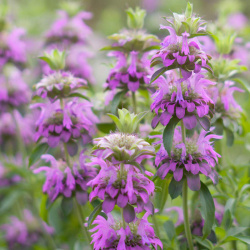 Lemon Mint Seeds
Monarda citriodora
Though not as strong as peppermint, this plant has a distinct herbal scent with hints of citrus, making it popular in flower and herb gardens around the world. The lavender flowers are a favorite of butterflies and hummingbirds.Quick View$2.98 Pkt - $13.34 / Oz
Lemon Mint Seeds
Monarda citriodora
Though not as strong as peppermint, this plant has a distinct herbal scent with hints of citrus, making it popular in flower and herb gardens around the world. The lavender flowers are a favorite of butterflies and hummingbirds.Quick View$2.98 Pkt - $13.34 / Oz -
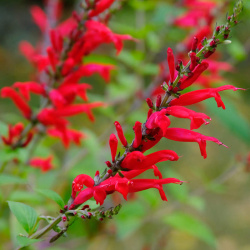 Scarlet Sage Seeds
Salvia coccinea
Ablaze with color, these crimson spikes come from the southern US, but can be grown as an annual in most areas. The hummingbirds love these red tubular flowers, and will be zinging through your garden with delight!Quick View$3.25 Pkt - $11.03 / Oz
Scarlet Sage Seeds
Salvia coccinea
Ablaze with color, these crimson spikes come from the southern US, but can be grown as an annual in most areas. The hummingbirds love these red tubular flowers, and will be zinging through your garden with delight!Quick View$3.25 Pkt - $11.03 / Oz -
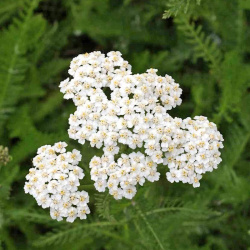 Western Yarrow Seeds
Achillea millefolium occidentalis
Growing clusters of small white flowers and feathery foliage, this is one of the most common wildflowers in the western United States. Yarrow makes an excellent pollen source in arid conditions.Quick View$2.98 Pkt - $9.54 / Oz
Western Yarrow Seeds
Achillea millefolium occidentalis
Growing clusters of small white flowers and feathery foliage, this is one of the most common wildflowers in the western United States. Yarrow makes an excellent pollen source in arid conditions.Quick View$2.98 Pkt - $9.54 / Oz -
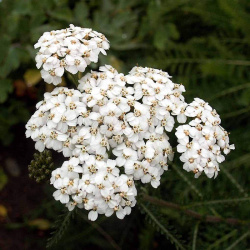 On Sale!
White Yarrow Seeds
Achillea millefolium
This wildflower is a common sight across the US and is often found growing in dry soils. The foliage is aromatic, and the long-lasting flowers work well for dried arrangements. Yarrow is also a valuable species for its herbal properties.Quick View$2.98 Pkt - $8.20 / Oz
On Sale!
White Yarrow Seeds
Achillea millefolium
This wildflower is a common sight across the US and is often found growing in dry soils. The foliage is aromatic, and the long-lasting flowers work well for dried arrangements. Yarrow is also a valuable species for its herbal properties.Quick View$2.98 Pkt - $8.20 / Oz
The Northern region is home to our Canadian friends in the eastern provinces, as well as the northern-most part of the Eastern US. This area is characterized by a long, cold winter with lots of snow, and a short humid summer that only lasts about 3 or 4 months. Most of the area is classified as a UDSA Growing Zone 4 or less, and the species that grow here have interesting ways to perpetuate themselves in spite of the short growing season. There are a lot of forests and wetlands in this region, so adequate moisture is hardly ever a problem. Look up your growing zone to make sure that the Northern wildflower seeds that you want to grow are winter hardy. Alternatively, just order annual flower seeds online so that the plant does not need to make it through the winter, but can reseed itself and come back from seed the next year.






